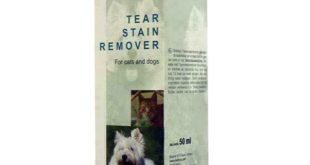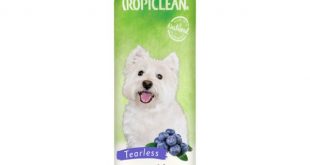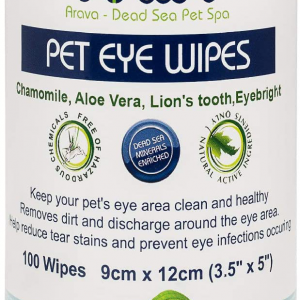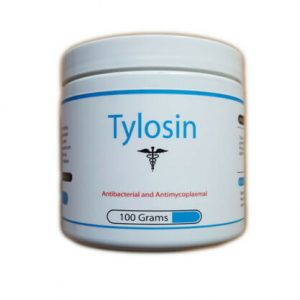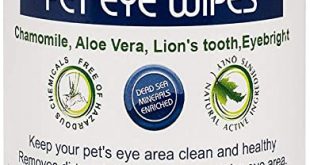Do you find that Dog’s fur or Paw has been turning into a pink or brown rusty looking color? If you do this article is for you!
Look, dogs can’t help it. When they’re happy, their tongues are out. When they’re excited, their tongues are out. When they’re hungry, their tongues are out. It seems like at any point throughout the day, you’ll find your furry little friend with its tongue out, drooling all over the place. It might be a bit messy, but it’s definitely cute. What isn’t cute, however, is saliva or red yeast stains on your dogs fur. This is commonly referred to as licking stains and with reasons. That’s what happens when your pup drools too much or lick’s itself and gets saliva on its beautiful fur coat.
The good news is that getting rid of these red stains stains from your dogs fur isn’t difficult. You just need to know what causes them, how to treat them, and most importantly, how to make sure they never come back. Let’s find out how you can do that.
-
Product on sale
 Arava Natural Pet Eye Wipes for Grown Dogs, Puppies and Cats- 100 Count- Free ShippingOriginal price was: $45.00.$42.00Current price is: $42.00.
Arava Natural Pet Eye Wipes for Grown Dogs, Puppies and Cats- 100 Count- Free ShippingOriginal price was: $45.00.$42.00Current price is: $42.00. -
Product on sale
 Tylosin Soluble Powder 100 gramsOriginal price was: $72.00.$65.00Current price is: $65.00.
Tylosin Soluble Powder 100 gramsOriginal price was: $72.00.$65.00Current price is: $65.00.
If you would like to explore some of the natural methods of dealing with Red Yeast and Saliva stains continue reading.
What are Saliva Stains?
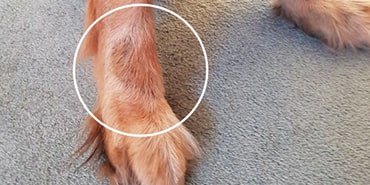
While drooling is one of the main causes of saliva stains, there’s another factor you need to consider. If your pup over-grooms itself, chances are it’ll develop saliva stains. You see, whenever your dog licks, bites or chews its fur, it leaves behind a small amount of saliva. It can’t help it. That’s what ultimately leads to saliva stains.
The question is: what do saliva stains indicate? Are they a problem? Are they dangerous or warrant a visit to the vet? Well, the good news is that saliva stains aren’t really something you should worry about. They are just a matter of aesthetics. However, saliva stains can indicate an underlying problem or condition.
You have to ask yourself, why is your dog chewing or nibbling this body part. Maybe it’s itchy? Maybe your pup’s in pain for some reason? Maybe your dog is just stressed? There are hundreds of reasons your pup might develop saliva stains.
Generally speaking, saliva or red yeast stains stains come in 4 different colors: red, pink, orange, or brown. While each color has its own causative factor, the one we really need to pay attention to is red. Why? Because red stains often indicate a yeast infection. More specifically, you should worry if you suspect red yeast stains.
What are Red Yeast Stains?
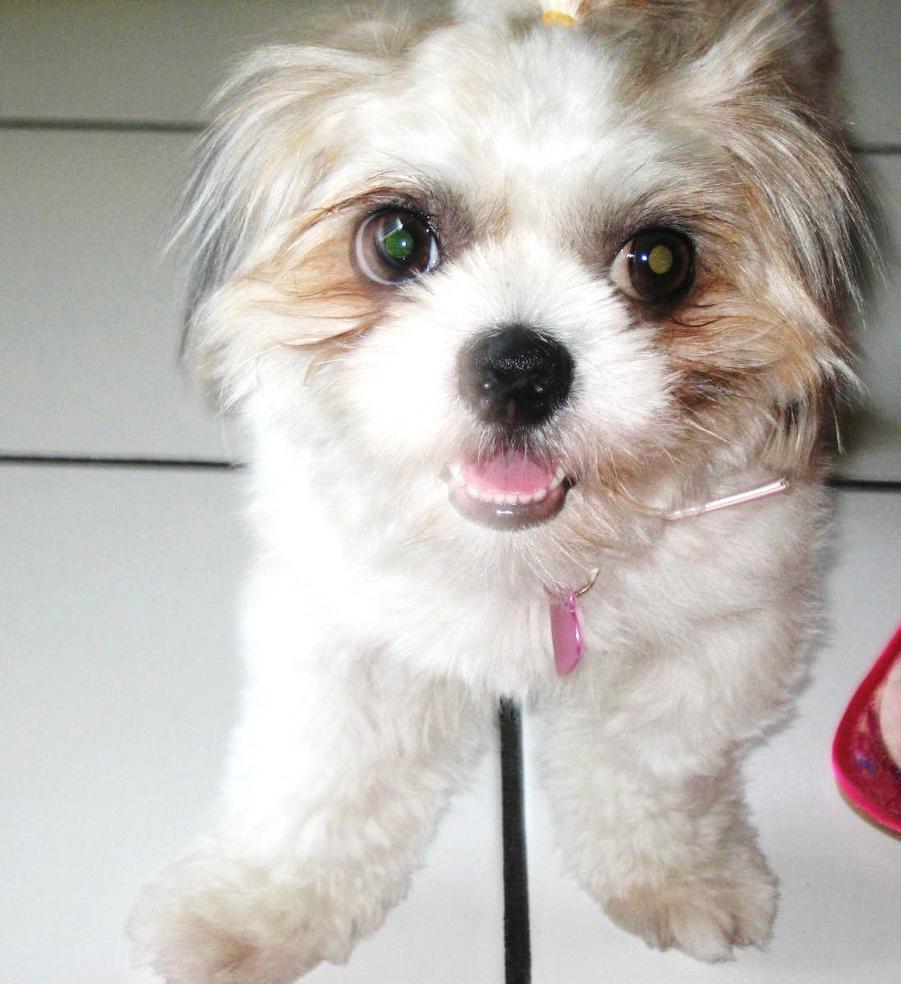
You’ve probably heard of yeast in the kitchen or at the bakery, right? Well, that’s a whole different kind of yeast. The one we’re talking about grows around your pup’s eyes, nose, and mouth ruining its perfect shiny white coat.
Red yeast stains are caused by a microscopic fungus called Ptyrosporin, Pityrosporum, or Malassezia. Yup, those are a lot of names for one annoying little microorganism that ruins your dog’s fur.
Here’s how it works. This tiny parasite looks for anything that has moisture. It’s like a human on Mars looking for any source of water it can find. Unfortunately, if your pup has a tearing problem or if it licks itself excessively, the saliva and tears form a medium that is ripe for fungal growth and cause saliva and red yeast stains.
Once these organisms settle down in the moist areas of your dog’s fur, they begin to thrive and reproduce. Eventually, your pup develops red yeast stains and skin irritations. Sooner or later, you’ll notice a bad odor coming from these areas and the reddish-brown streaks will just get worse and worse if left untreated.
The question is, how do you stop this? How do you stop saliva and red yeast stains? It’s actually quite easy. Here’s how.
How to Get Rid of Saliva Stains and Red Yeast Stains from Your Dogs Fur

There are several methods you can follow to get rid of saliva stains and red yeast stains. It’s easier than you think. Let’s take a look at a few good tricks and remedies.
Shampooing
This one might seem a bit too obvious, right? Shampoo. Yes, it’ll definitely get rid of your pup’s saliva stains. That being said, you’ll need a special approach.
First of all, you can’t just use any old shampoo you have. It has to be a gentle, delicate kind that is made just for your pup. Another option is baby shampoo. Anything other than regular adult shampoo is fine because you want something that is ultra-light and super gentle.
Second, you need to prepare your pup before applying the shampoo. Remember, getting rid of saliva or red yeast stains isn’t as simple as taking a bath. You need to trim the excess hair around the stained areas and make sure the stain is exposed down to the roots. This will help minimize irritation and discomfort.
Next, massage the shampoo into the stained areas with some warm water. Pay special attention and avoid getting the shampoo in your pup’s eyes. You don’t want any unnecessary tearing. After you’re done, make sure you dry your pup thoroughly because moisture can make saliva and red yeast stains worse.
Saline Solution
Don’t worry, we’re not going to get all Grey’s Anatomy over here. Saline solution is simply water and salt (sodium chloride) mixed with just the right portions. All you need is some saline and a cotton ball. Soak up some of the solution and start massaging the stains away. Be persistent. You should take at least 45 seconds and make sure you reach every last part of the stain. As always, make sure you stay away from your pup’s eyes, even though saline is harmless. It’s just a precaution.
After that, rinse out the saline with warm water. You can repeat this process 3-5 times a day until you’re satisfied that the saliva and red yeast stains are completely gone.
The great thing about saline is its antiseptic properties. It helps kill bacteria, fungi, and other microorganisms that might be causing the staining problem. In other words, it eliminates the saliva and red yeast stains, along with the source of the problem.
Hydrogen Peroxide
Before you start using the hydrogen peroxide, you want to first give your pup a warm bath. That’ll make its fur ready to receive the peroxide. Next, you want to soak up some hydrogen peroxide with a cotton ball and then go to work. Wipe away the saliva and red yeast stains as much as you can, going gently and taking at least 45 seconds.
It takes some time to work its magic so be patient. After that, rinse away any residual peroxide with cold water.
Now, I know what you’re thinking. You’ve probably heard that hydrogen peroxide isn’t safe, right? While there are a lot of rumors online, you should know that it’s perfectly safe to use as long as you stay away from your pup’s eyes. In fact, some people even use hydrogen peroxide to clean open wounds so that should indicate how safe it is.
If you’re a bit worried but you still want to get rid of those pesky saliva and red yeast stains, you can dilute the peroxide before use. Even better, add a bit of saline to the mixture instead of water and you’ve got a diluted mixture that works like magic!
Apple Cider Vinegar
I know, I know. Enough with the apple cider vinegar already, right? It’s in every homemade stain remedy you can think of but what can I say? It really does work like magic! Here’s how to use apple cider vinegar to get rid of saliva or red yeast stains.
The method is really simple: just add some vinegar to your dog’s drinking water. Why? Well, apple cider vinegar has this magic property: it changes the chemical nature of your dog’s bodily fluids, including tears and saliva.
It adjusts the pH levels of your pup’s tears and slobber. The new, balanced pH levels help keep bacteria and other microorganisms away because they favor acidic and basic media. Not to mention the apple cider vinegar keeps your pup’s fluids much cleaner than normal.
So how much apple cider vinegar should you give your pup? Well, here’s a general rule: for every 50lbs, give 1 teaspoon of vinegar. Let’s say your pup weighs 100lbs. That means you’ll need a couple of teaspoons to get rid of saliva and red yeast stains.
One concern, however, when using vinegar is its horrible taste. Not all puppies will accept the pungent aroma and flavor. Keep an eye on your pooch. If you notice it hasn’t been drinking as much water as before, this could be the reason.
Keep in mind that hydration is much more important than treating saliva and red yeast stains. You want your pup to drink as much water as possible. If it isn’t liking the vinegar, you can start out with a very, very small amount and then work your way up gradually until your pup gets used to the taste.
Teabags
While this sounds more like a home-spa remedy, it actually does wonders for saliva and red yeast stains. First, apply some shampoo or soap to the stained areas along with warm water and gently rub your dog’s fur.
After that, take a warm teabag and place it right over the saliva and red yeast stains. Leave it there for a couple of minutes. It takes some time to work its magic. You’ll notice the tea bags help soak up excess moisture and dry up the saliva.
You can repeat this remedy 3-4 times a day until you’re satisfied with the results.
How to Avoid getting Saliva and Red Yeast Stains on your dogs Fur
All of these remedies and treatments are good, but who wants to keep treating stains over and over again? Isn’t it more important to know how to keep saliva and red yeast stains away? Well, it’s actually quite easy. You just need a few good tips and tricks.
Filtered water
Start off by examining the type of water you’re giving your pup. If you’re using tap water, then saliva stains and red yeast stains are the least of your worries. Not only does tap water contribute to the staining problem, but it also causes several health-related issues.
Tap water is loaded up with minerals and chemical compounds that accumulate in your pup’s fluids. One of these fluids is saliva, which is why your pup eventually develops saliva and red yeast stains.
Filtered or purified water, on the other hand, doesn’t have as many minerals and, therefore, doesn’t cause the staining problem. This simple switch can result in significant improvements in a matter of weeks!
Diet
The second thing you should examine is your pup’s diet. Not only will a proper diet eliminate saliva and red yeast stains, but it’ll also improve your pup’s overall health.
Stick to nutritious, high-quality foods that are free from chemicals and additives. They might be slightly more expensive, but it’ll save you the trouble and cost of having to deal with saliva stains.
Other Remedies
If you have tried natural remedies to get rid of Saliva staining on your dog and they haven’t been effective then Tylosin Powder may be your best bet. Tylosin powder is probably the most effective treatment for Tear Stains available on the market today.
Frequently Asked Questions
How Does Staining Occur?
It’s easy to blame saliva and tears for causing your pup’s stains, but what really causes it? Down on the molecular level, how do transparent fluids like tears and saliva cause a red, brown, or pink stain? You’ve probably wondered about that a few times, haven’t you?
Well, the answer is simple: porphyrins. Porphyrins are iron-containing compounds found in most of your pup’s body fluid. They’re usually secreted through stool and urine, but sometimes they find their way out through other fluids like saliva and tears.
With excessive tearing or salivation, you get those pesky stains due to the oxidation of porphyrins. Whether we’re talking about tear stains, saliva stains, or red yeast stains, the main causative factor will always be porphyrins.
Conclusion
Saliva stains and red yeast stains are pretty frustrating. No one likes it when their furry little friend looks less-than-perfect. Luckily, these stains aren’t much of a health problem and they can be easily treated. The tough part is making sure they never come back.
Once you’ve gotten rid of the saliva and red yeast stains, be attentive and consistent. Always be on the lookout for the slightest signs of discoloration and treat them before stains even develop. Saliva and red yeast stains may seem uncontrollable but if you constantly stay on top of things, you’ll never have to worry about them again!
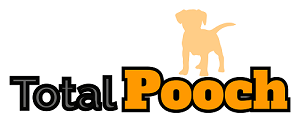 Total Pooch Dog Supplements, Tear Stain Removers, De-wormers, Tylosin for Dogs and other great products.
Total Pooch Dog Supplements, Tear Stain Removers, De-wormers, Tylosin for Dogs and other great products.
